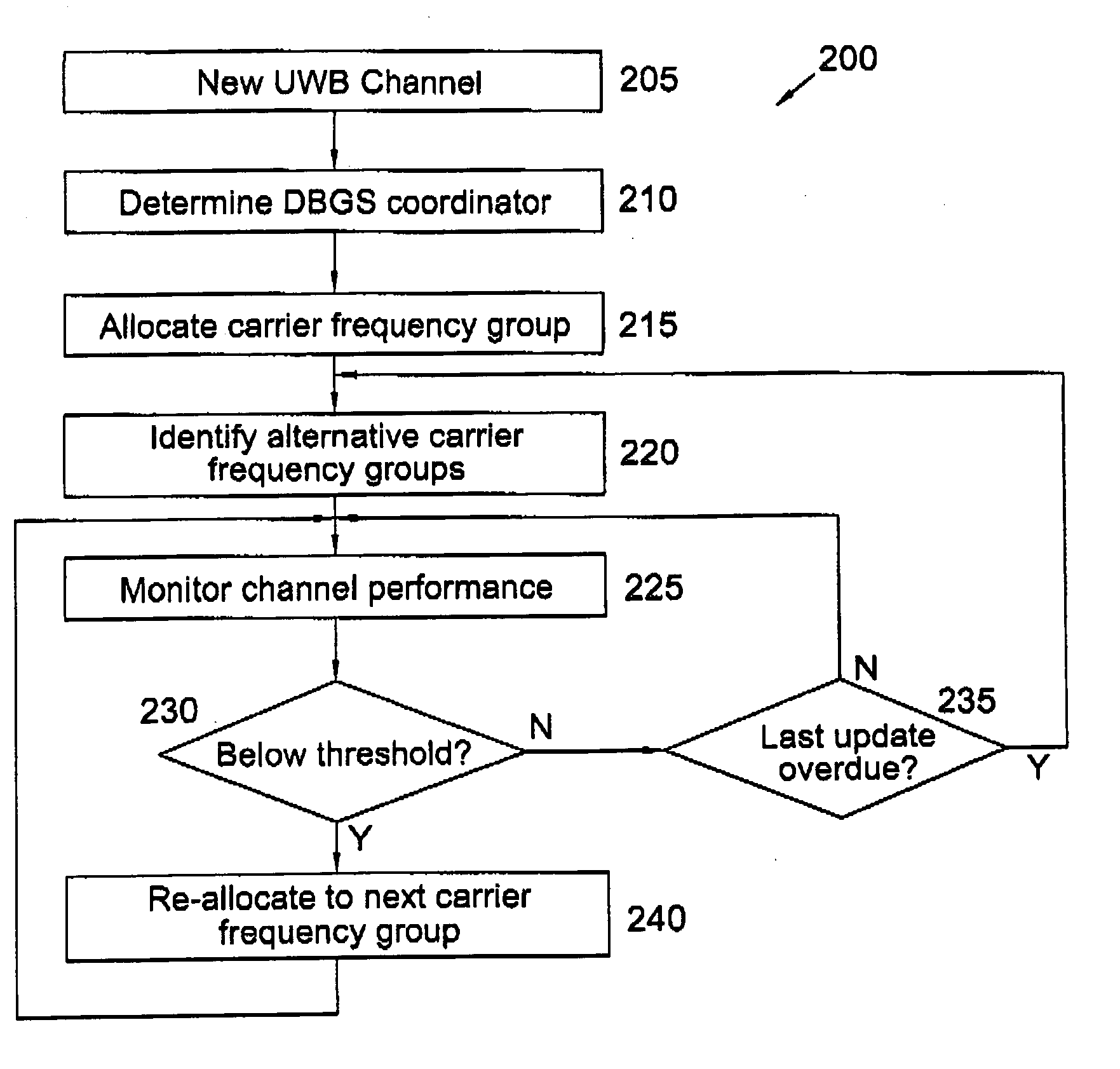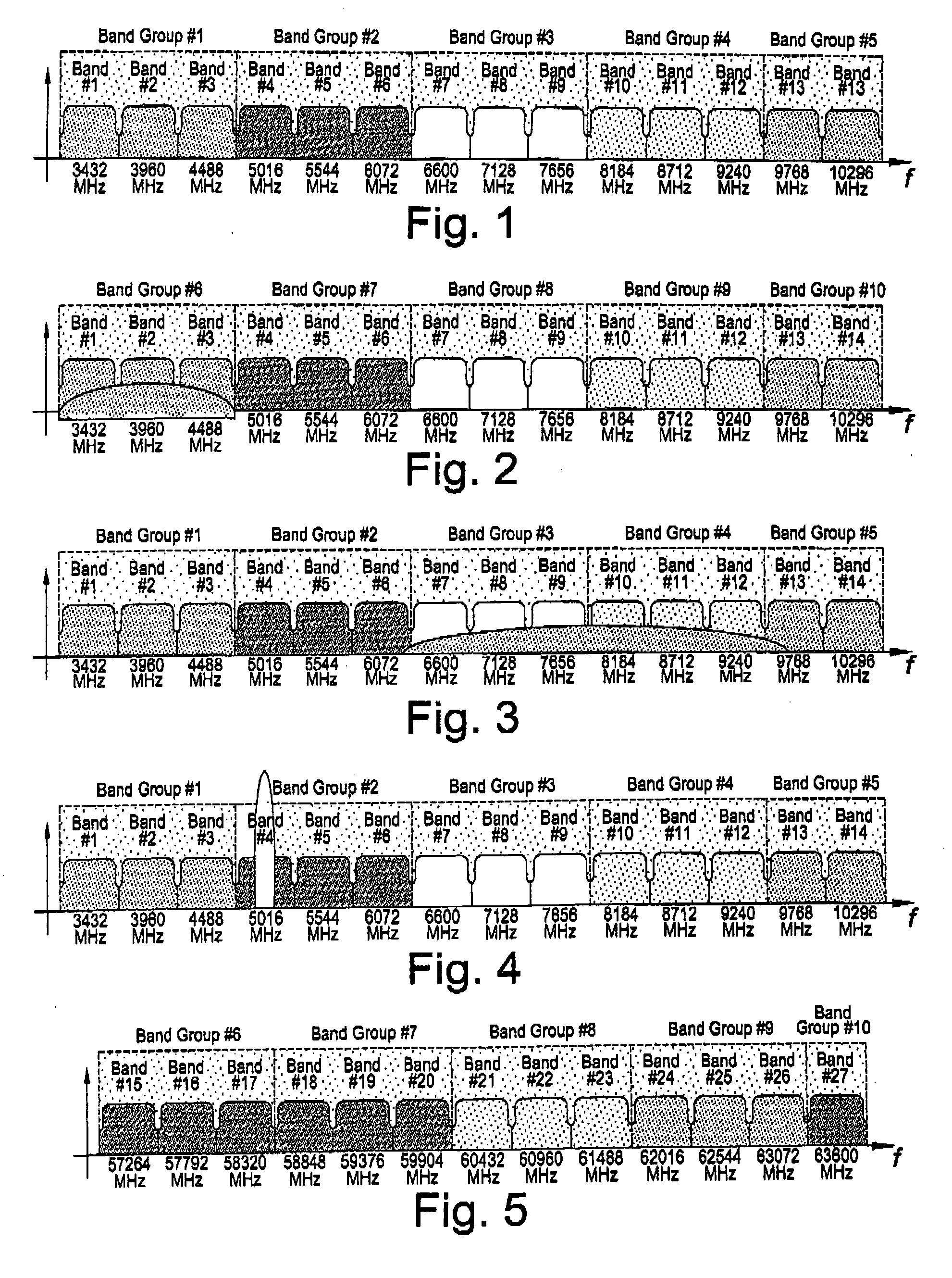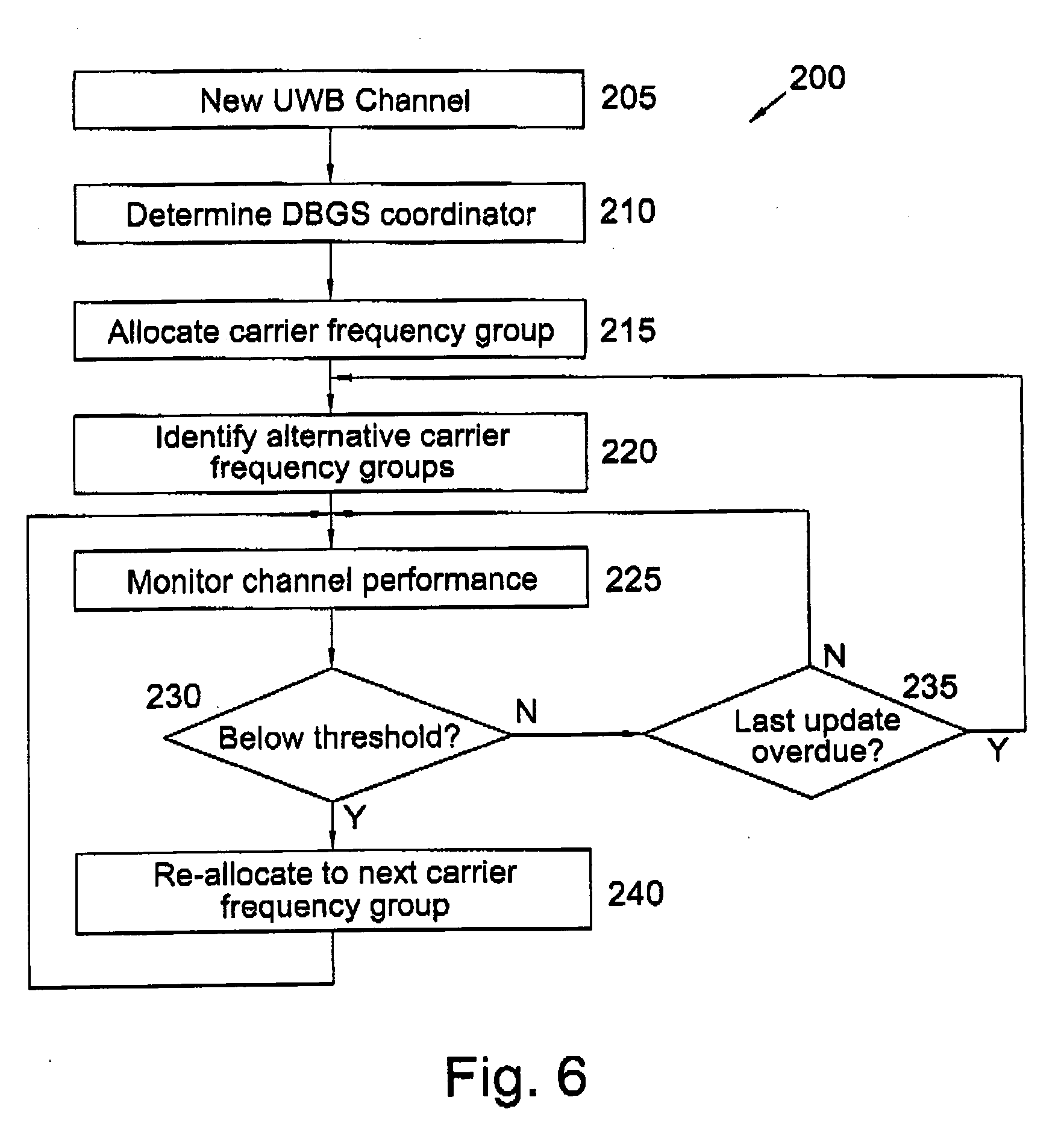Broadband carrier frequency selection
a carrier frequency and broadband technology, applied in the field of broadband wireless communication, can solve the problems of signal loss due to path loss, material and body absorption, interference between narrow band systems and uwb systems,
- Summary
- Abstract
- Description
- Claims
- Application Information
AI Technical Summary
Benefits of technology
Problems solved by technology
Method used
Image
Examples
Embodiment Construction
[0035]FIG. 1 shows the frequency allocations of the bands and band groups for the MBOA proposal, which utilise the 3.1-10.6 GHz band. Table 1 below shows all 14 OFDM physical channels or sub-carrier frequency bands, each having a spacing of 528 MHz. Each OFDM channel is a collection of 122 modulated and pilot tones or orthogonal sub-carrier frequencies with together produce an OFDM symbol for that channel.
TABLE 1Band IDOperatingBand(ChannelLowerCentreUpperModeGroupNo.)FrequencyFrequencyFrequencyI1131683432369623696396042243422444884752II2447525016528055280554458086580860726336III3763366600686486864712873929739276567920IV4107920818484481184488712897612897692409504V513950497681003214100321029610560
[0036] As noted above, the proposed UWB system, as defined by the MBOA physical layer proposal to IEEE 802.15.3a, specifies the use of time-frequency codes (TFCs) to interleave coded data over three frequency bands (known as a band group). Four such band groups and an additional band group...
PUM
 Login to View More
Login to View More Abstract
Description
Claims
Application Information
 Login to View More
Login to View More - R&D
- Intellectual Property
- Life Sciences
- Materials
- Tech Scout
- Unparalleled Data Quality
- Higher Quality Content
- 60% Fewer Hallucinations
Browse by: Latest US Patents, China's latest patents, Technical Efficacy Thesaurus, Application Domain, Technology Topic, Popular Technical Reports.
© 2025 PatSnap. All rights reserved.Legal|Privacy policy|Modern Slavery Act Transparency Statement|Sitemap|About US| Contact US: help@patsnap.com



